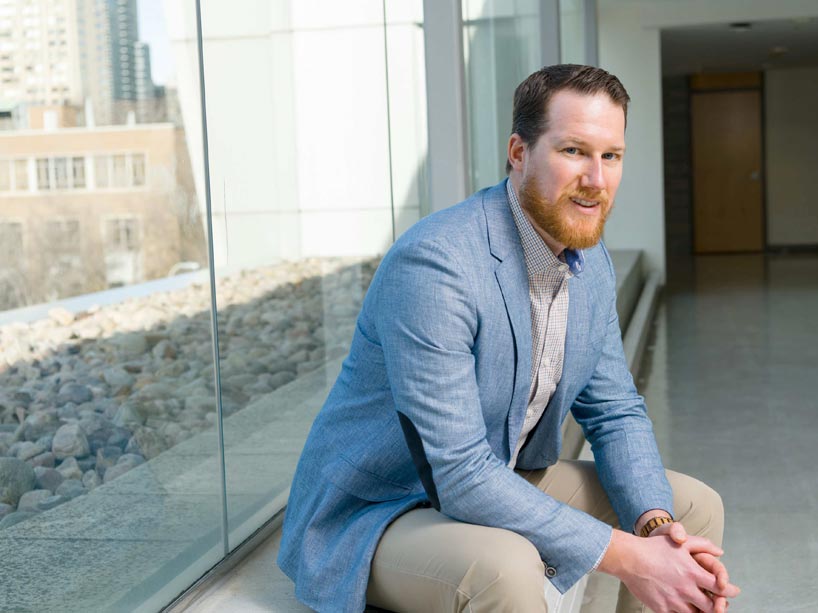Making radiation treatment better

Photo: Clinical medical physicist James Gräfe works at the Odette Cancer Centre, part of Sunnybrook Health Sciences Centre. Photo: Clifton Li.
If you're ever looking for researcher James Gräfe, you would be advised to check his schedule.
Four days of the work week, Gräfe is based at Ryerson University, where he's a professor in the Department of Physics. On the remaining day, though, he can be found at a local hospital, where as a clinical medical physicist, he ensures cancer patients receive the correct dose of radiation, precisely where it's needed to treat their disease.
"I'm essentially a pharmacist for radiation," he says of his work at the Odette Cancer Centre, part of Sunnybrook Health Sciences Centre. Indeed, Gräfe's entire career is directed toward improving patient care, whether that means optimizing a course of treatment or preparing the next generation of clinical professionals.
For example, as a certified member of the Canadian College of Physicists in Medicine, Gräfe serves as an important instructor and mentor for biomedical students in Ryerson's graduate-level Option in Medical Physics. The specialized stream, which is accredited by the Commission on Accreditation of Medical Physics Educational Programs, enables Ryerson students, if they wish, to apply to post-graduate residency programs in medical physics.
Gräfe is constantly looking for new ways to advance students' knowledge and skills. For instance, thanks to a partnership he developed with clinical medical physicist Rao Khan at the Washington University School of Medicine in St. Louis (WUSM), Ryerson students have the opportunity to work with state-of-the-art radiation therapy equipment.
For instance, under Gräfe and Khan's supervision, Ryerson biomedical physics PhD student Shadab Momin is currently based at WUSM. There, he's using dual energy X-ray treatment technology to explore how to improve the quality of radiation treatment plans.
Another example of leading-edge technology at WUSM is a proton therapy machine. The expensive piece of equipment, which isn't currently available in Canada, could potentially reduce the damage that radiation therapy inflicts on non-cancerous cells in the body for some select disease sites.
Gräfe uses the proton technology to study the nuclear and atomic interactions that occur when a contrast agent containing the element gadolinium is introduced into the body in order to view and assess a tumor. The goal is to develop a way of tracking a tumor's position and response to radiation treatment in real time.
"It would give us an extra degree of confidence,” says Gräfe, noting the work is an extension of his concurrent research on rare earth metals and their connection to bone health. That project has received funding from the Natural Sciences and Engineering Research Council of Canada.
Finally, Gräfe is working with McMaster University researchers to study gadolinium retention. More recently, the team found that some patients continued to retain the metal five years after being administered a gadolinium-based contrast agent before undergoing an MRI scan. The research will be published in the latest issue of the journal Radiology.
"This is important as gadolinium has no known biological role and can be toxic in high quantities," says Gräfe. "These agents should be completely eliminated from the body."
Gräfe’s research has received additional support from Ryerson's Faculty of Science and the Department of Physics.